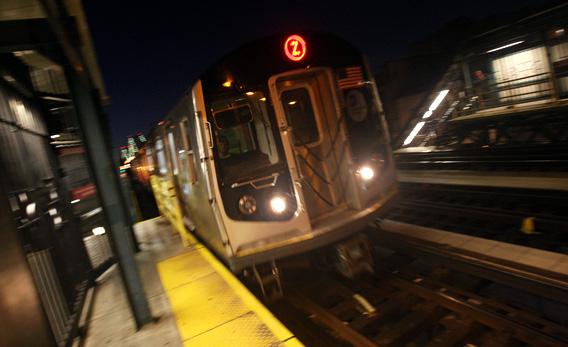A Queens, N.Y. man was pushed onto the subway tracks in a Times Square station on Monday and crushed to death by an arriving train. Onlookers shouted as the man attempted in vain to escape the tracks. What should you do if you are pushed onto a subway track?
Wing it. New York’s Metropolitan Transit Authority doesn’t offer advice or guidelines for people who find themselves on the subway tracks, because each station is different. People trapped on the tracks have to rely on their own quick thinking. After assessing your surroundings, you should consider four options. Obviously, the optimal choice is to get back onto the platform, often with the help of bystanders. Dramatic subway rescues are somewhat common. In 2009, for example, an off-Broadway actor rescued a stranded man by hoisting him back to safety. (The good Samaritan said his stage role at the time required him to lift and carry other actors.) If you can’t boost yourself up in time, look for a space beneath the platform edge. In some stations, particularly in Manhattan, there is enough room between the train and the platform to accommodate a person. If the platform appears flush with the approaching train, you could take shelter in the space between the two sets of train tracks. This is a dangerous choice, though, because you’d have to traverse the third rail, which carries 660 volts of electricity, more than enough to kill a person. A final option is to simply lie flat—there may be enough clearance for the train to pass over you. In 2007, when a seizure caused a man to fall onto the tracks, a Vietnam veteran saved his life by pinning him to the ground between the rails until the train passed. Both men sustained minor injuries.
It’s difficult to calculate your chances of surviving the subway tracks. Approximately 50 percent of the 702 people who found themselves on the tracks between 1990 and 2003 died, but that mortality rate is skewed. Most subway track fatalities are suicides in which the victim made no attempt to escape, and a large percentage of the remainder are accidents involving drugs or alcohol. While subway track murders garner the most media attention, only 3 percent of those who wind up on the tracks are pushed.
Foreign transit systems have taken a few steps to decrease subway track deaths. The most visible and effective tool is the platform screen door, which separates the platform from the tracks, preventing accidents and deterring suicides. A study showed that the screens reduced track injuries in Hong Kong by 69 percent. In Vienna, the government placed limits on media coverage of suicides, which appears to have decreased the rate of subway suicides by 75 percent. Some stations in the London underground system have drainage pits beneath the tracks, increasing clearance between the cars and the ground. Although the installation of the pits had nothing to do with falls, a 1999 study showed that the pits—now commonly known as “suicide pits” or “dead man’s trenches”—cut the subway track death rate by half.
Got a question about today’s news? Ask the Explainer.
